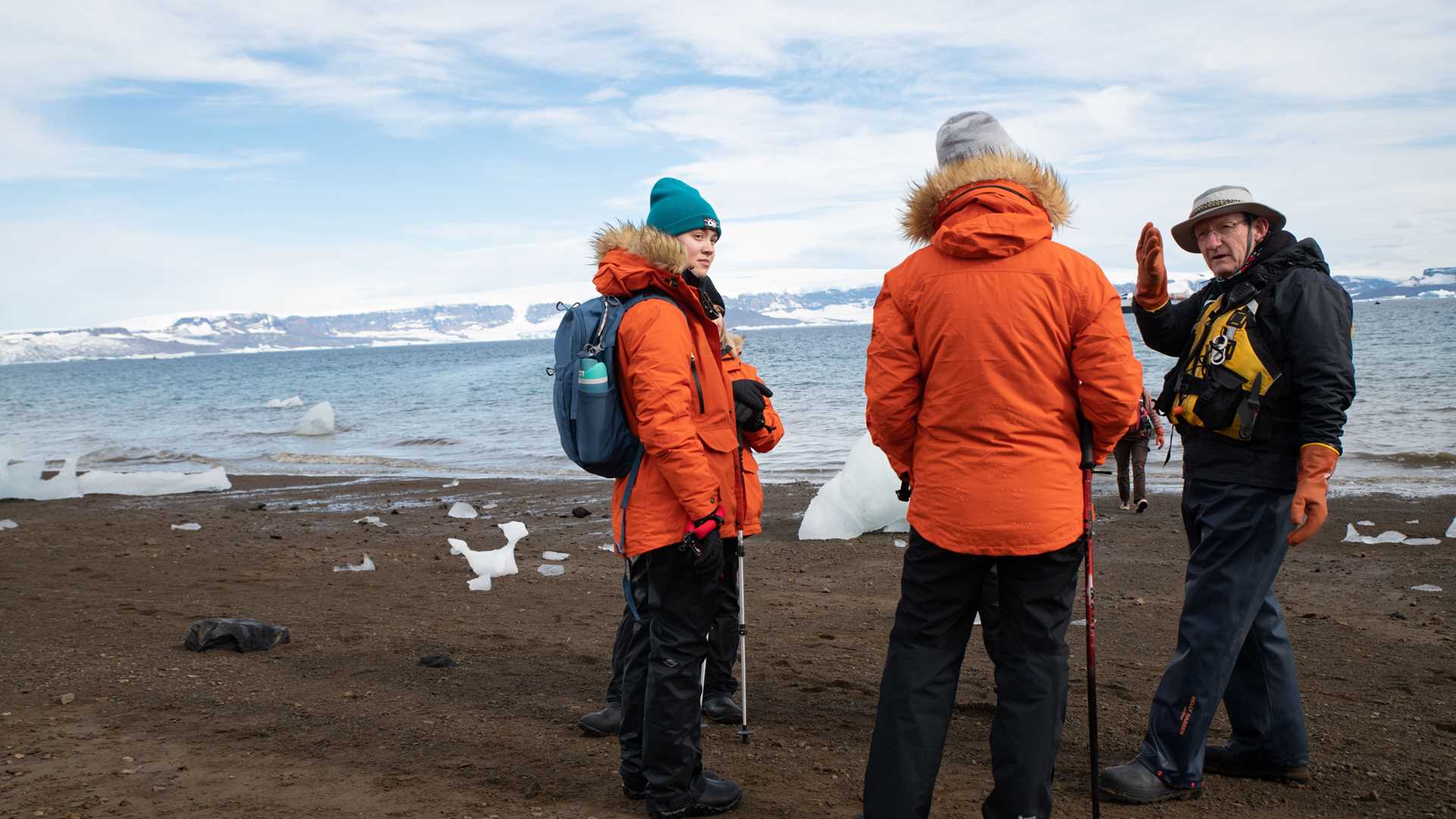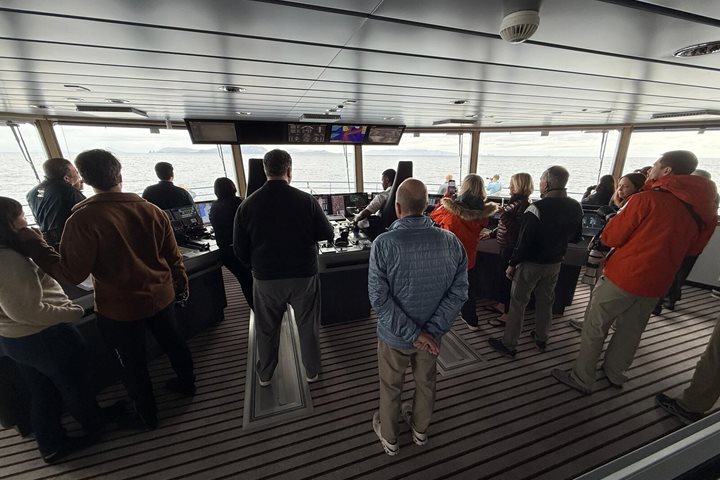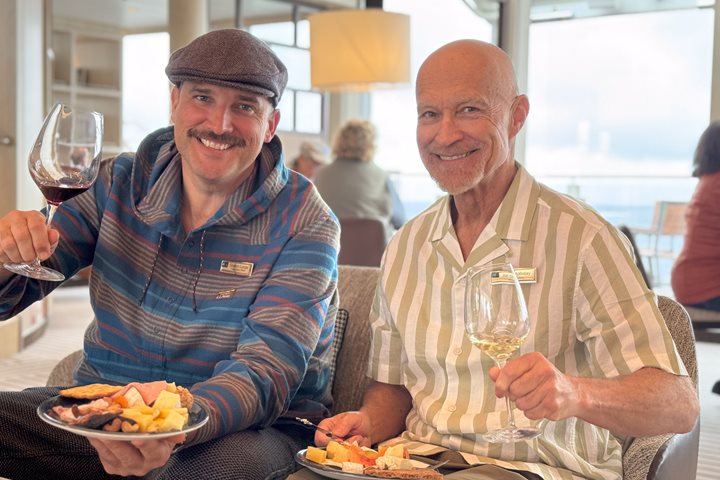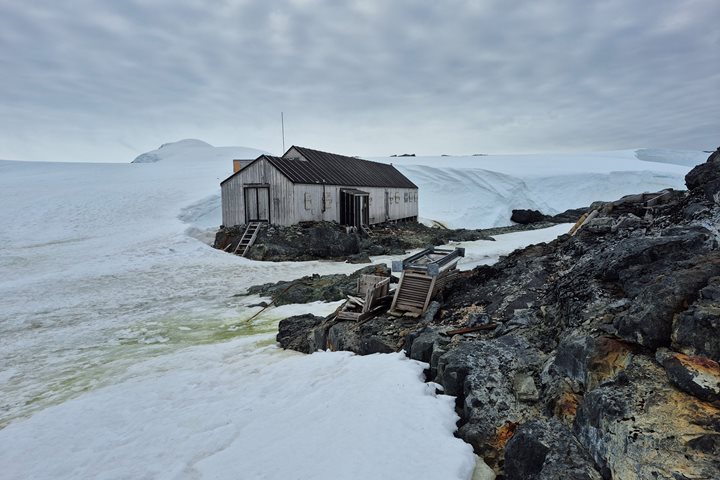The long, slender beach at Snow Hill is littered with fossils, small Cretaceous ancestors of today’s squid whose soft bodies were tucked safely inside snail-like shells. Most of the shells I found were no larger than a silver dollar.
As we climbed the hill to the Nordenskjold hut and beyond, the fossils became even more abundant. It was hard to look down without seeing some evidence that this uplifted and volcanically altered place was once on the seafloor.
Paralleling the beach, basaltic dikes resembled stone walls assembled by long-extinct giants. Reminding us of the harsh realities of this unforgiving place, we spotted the desiccated remains of two long-dead seals. Their soft fur still adorned stiff, collapsed skin–natural mummies that rivaled those in the Valley of the Kings in Egypt.







